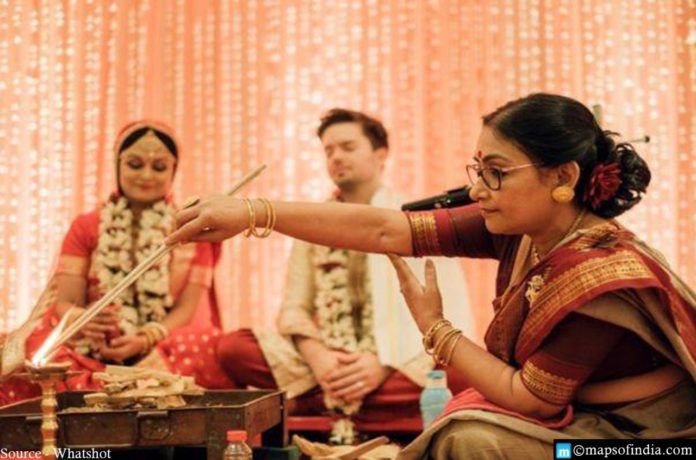When the priest of the Durga temple in Madurai’s Nalluthevanpatti town fell ill and was unable to do the ritual pujas, his only child, Pinniyakkal, stood up. She strengthened her claim to be the temple’s full-time priest in 2006, which is a hereditary post.
The people of the area were shocked. Even though the temple deity was female, history mandated that the pujari must be male. Pinniyakkal went to court as a result. Justice K Chandru of the Madras high court agreed with her petition, declaring, “The altars of the God must be free of gender discrimination.”
Around 15 years later, the Dravida Munnetra Kazhagam (DMK)’s state minister of temple administration declared that women and non-Brahmins could apply for roles as temple priests if they had received training in “agama sastra,” the book that lays out prayer and worship procedures.
Women and non-Brahmin priests are not a novel concept. The Dravida Munnetra Kazhagam (DMK) established non-Brahmin training centres in 2006. Women’s training centres were initially introduced in Maharashtra, Pune, and Ahmednagar. Anjali Kale established the Rudrani Purohita Mandal in Mumbai in 1990 and has educated 250 female priests, including her daughter Kshama Mangesh Joglekar. The latter works for the Life Insurance Corporation (LIC) during the day.
According to scholars, Hinduism does not prohibit women from becoming priests. However, patriarchal ideas have crept into various traditions throughout time, such as bans on women during “impure” menstruation. Nevertheless, younger feminists are challenging them, and the Sabarimala verdict, which removed the restriction on women of menstrual age, was regarded as a historic moment in feminist law.
On February 15, 2021, India witnessed another instance of women empowerment as a female priest named Sheela Atta officiated Dia Mirza’s Hindu marriage to businessman Vaibhav Rekhi. Two days later, Mirza tweeted an adorable message to her priest: “Thank you, Sheela Atta, for conducting our wedding ceremony. I’m very proud that we can #RiseUp as a generation. #GenerationEquality.” Netizens applauded Dia’s choice and replied with hashtags such as “smash patriarchy” and “long live feminism.”
Although Dia’s decision might spark a countrywide patriarchy-shattering trend in weddings, female priests are not a new phenomenon in India. Nandini Bhowmik, a Sanskrit professor at Jadavpur University, has performed marriages and other religious ceremonies with her all-female crew for over a decade.
Mirza isn’t the only one. A rapidly increasing number of couples are having their marriages officiated by female priests.
Bramaramba Maheshwari, another female priest in Mysore, has been performing the same since 1995. “I have conducted over 2,000 weddings since I became a priestess. When I began Vedic studies in 1988, my curiosity was piqued, and I started asking myself, ‘Why can’t women become priests?’ The Vedas don’t differentiate between men and women. Today, so many couples are opting for female priests, and that makes me really happy,” Bramaramba explained to Times of India.




